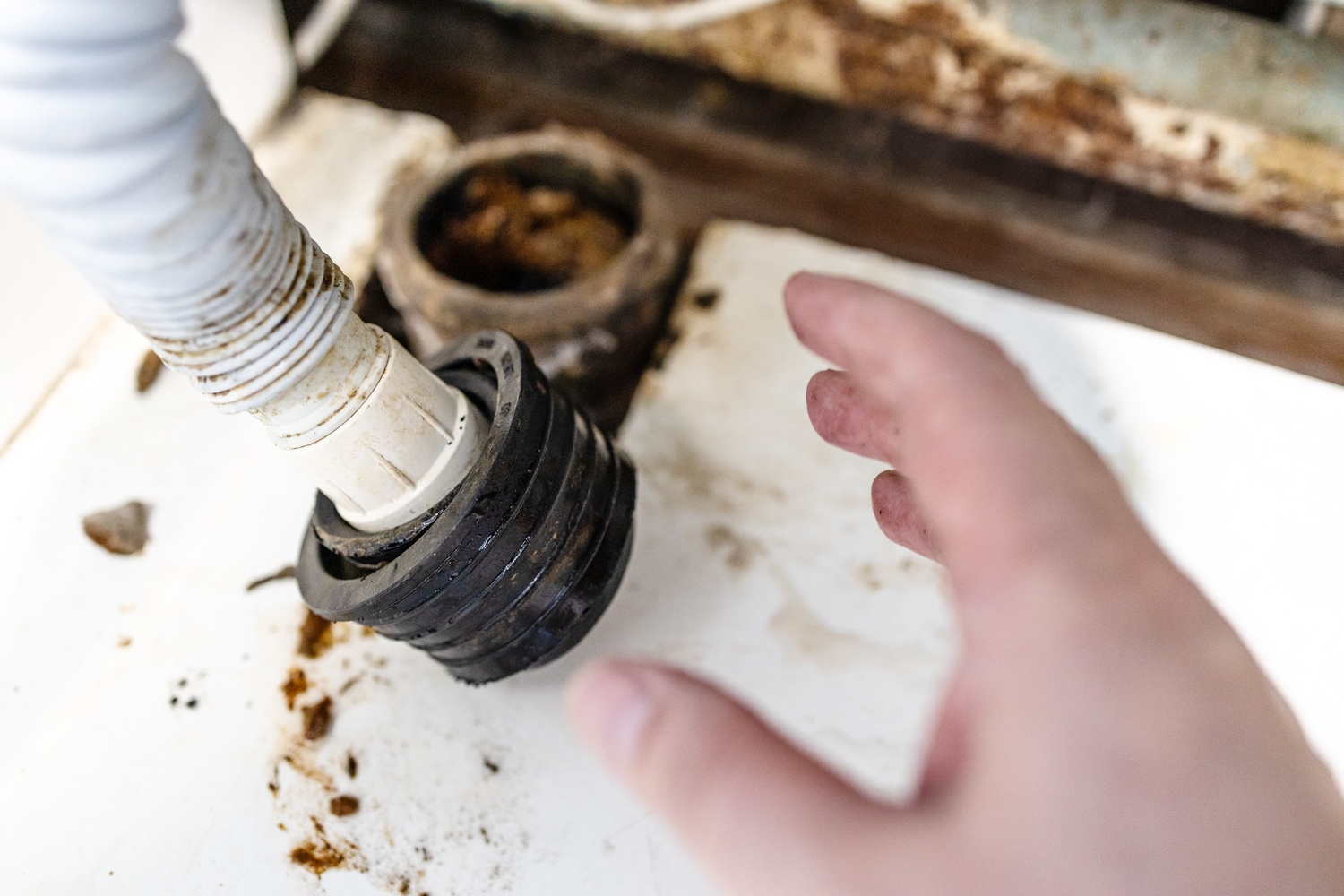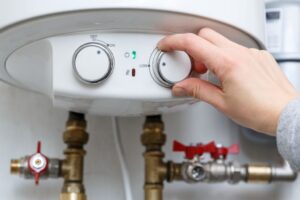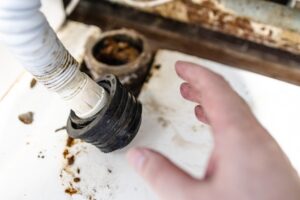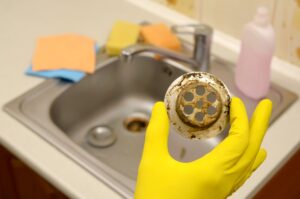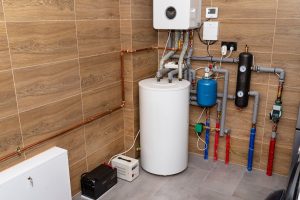Knowing the condition of your household pipes can help you prevent leaks, water contamination, and costly damage. Many older Sydney homes have ageing and worn-out plumbing systems, often hidden behind walls and under floors. These pipes are slowly wearing down, but homeowners are unaware of it.
With this guide, learn how to assess the condition of your household pipes and avoid plumbing disaster surprises. We will walk you through checking your pipes and knowing when to replace them.
And if you’re looking for a trusted local plumbing company, Link Plumbing is just a call away. We offer pipe inspections and plumbing maintenance across Sydney.
Why Pipe Condition Matters
Old and worn-out pipes can lead to many problems, including flooding, structural damage, mould or mildew growth, and a contaminated water supply.
- Structural damage: Old pipes are prone to damage, which can cause leaks and flooding. When undetected for a long time, leaks can damage your home’s walls, floors, ceilings, and other structural elements.
- Mould and mildew growth: Even a small leak can create a breeding ground for mould and mildew, which can cause health risks such as allergic reactions and respiratory issues.
- Water supply contamination: Damaged pipes introduce contaminants, such as microorganisms, heavy metals, and chemicals, to your water supply, which may cause illnesses.
- High water bills: Leaks waste water, which can significantly increase your water bills.
You can avoid these issues by conducting regular inspections of your household pipes. A certified plumber can detect problems early on and prevent more costly repairs.
Common Signs Your Household Pipes May Be in Poor Condition
Watch out for these signs that your household pipes may need updating:
- Low Water Pressure: You may notice a sudden drop in water pressure even when all the faucets in your home are off.
- Rust-Coloured Water: Water from your faucets and toilet turns rust-coloured, indicating that your old iron or steel pipes are corroded. You need to have your old pipes replaced ASAP.
- Frequent Clogs or Backups: Old plumbing may already collapsed or bitsmay be slowly being dragged away, causing clogs and water to back up. You will notice water backing up from drains and sinks.
- Pipe Noises (Banging or Gurgling): As the old plumbing pieces are removed, they cause audible banging or gurgling sounds that can be heard from the drain, sink, floors, walls, or other areas of your home where plumbing is installed.
- Damp Spots: Small leaks can lead to moisture, causing damp spots on walls, floors, and ceilings. At first, the area will be cool to the touch, but eventually, moisture will lead to noticeable marks and stains on the surface.
- Green Corrosion or Visible Copper Pipes: Also known as patina, this happens due to the oxidation of copper pipes caused by exposure to air and water. Having green corrosion on copper pipes may indicate leaks and is a sign that the pipes may need to be replaced.
- Unusually High Water Bills: Have your pipes checked if you have an exceptionally high bill, especially if nothing has changed in your consumption habits.
How to Check Your Household Pipes: Step-by-Step Guide
Prevention is key to avoiding costly plumbing issues. Use this DIY household pipe inspection checklist.
Inspect Exposed Pipes Under Sinks or in Basements
Regularly check all exposed pipes, such as those under the sink or in your basement. Check for damage and leaks and assess the surrounding areas for moisture or dampness. Use a flashlight to assess your pipes and your hands for moisture.
Check the Water Meter for Signs of Leaks
Checking your water meter can easily tell if there is a leak anywhere in your home. Turn off all faucets and appliances that use water in your home, such as your dishwasher and washing machine, and check your meter. If the dial keeps moving, you likely leak.
Turn on Taps to Observe Flow and Colour
Water colour and flow changes may indicate worn, broken, or leaking pipes. Turn on all taps regularly to check colour and flow. Rust-coloured water and irregular flow could be due to leaks or broken pipes.
Listen for Strange Noises in the Walls
Examine walls where water pipes and plumbing are laid out. Listen for unusual noises such as gurgling, gushing, banging, or tapping, which could be signs of damaged pipes or leaks.
Inspect Ceilings and Walls for Water Stains or Bubbling Paint
Leaks can travel through small gaps and openings in the wall or ceiling, causing paint to bubble and leaving water stains. These could be signs of a chronic or persistent leak that you may have overlooked.
Always remember, when checking for leaks, be careful not to damage or tamper with your water meter or plumbing system to ensure safety and avoid costly repairs.
When Should Pipes Be Replaced in a Home?
Homes usually have galvanised steel, copper, or PVC pipes. Here are the typical pipe lifespans by material:
Galvanised steel (20 to 50 years, depending on the environment)
Galvanised steel pipes are durable and expected to last more than 50 years in average home environments and over 20 years when used in severe water environments. These pipes come with a zinc coating to further protect them from rust. No maintenance is needed, making it a reliable material for home plumbing.
Copper (up to 70 years)
Copper water lines are mostly found in older homes. This material is generally reliable and has a lifespan of up to 70 years. After this time, copper pipes may start showing signs of ageing and damage, such as corrosion (patina) and leaks.
PVC (50 to 80 years)
PVC pipes are the most common and reliable home water and wastewater pipe material. They can last 50 to 80 years and are often used for cold water applications. For hot water use, chlorinated polyvinyl chloride (CPVC) is preferred due to its high-temperature resistance.
If you live in an older or heritage home in Sydney, your plumbing system may be made of outdated materials that are prone to damage, corrosion, and failure. You need a full plumbing inspection to catch hidden issues early and ensure everything meets modern standards.
Why Choose Link Plumbing for a Professional Pipe Inspection
Link Plumbing knows Sydney homes inside and out. We have years of experience and a sharp eye for spotting household pipe damage before it becomes a costly problem.
We’ve seen and fixed everything from old galvanised water pipes to sneaky leaks. Our expert team has local knowledge of the unique challenges in Sydney properties, especially in older homes and subpar past repairs. We use only advanced tools to conduct thorough inspections and give you a clear picture of your home’s plumbing health.
Please don’t wait until it’s too late. Book a plumbing check or request a quote today!
Frequently Asked Questions
1. How do I know if my pipes need replacing?
A professional plumbing inspection can help identify issues and assess if your pipes need replacing.
2. Is discoloured water a sign of bad pipes?
Changes in water colour indicate dirt, debris, or contaminants present in water due to damage in older pipes or leaks.
3. Can pipes deteriorate without visible leaks?
Pipes can deteriorate due to corrosion, wear, and tear even without visible leaks. The sudden movement of pipes due to construction work may also damage their interior lining.
4. How often should household pipes be inspected?
It’s best to conduct regular inspections at least once a year to avoid leaks and costly issues. A professional plumbing company must inspect older homes more frequently.
5. Will insurance cover pipe repairs from wear and tear?
Home insurance covers sudden or accidental damage due to plumbing but not gradual wear and tear.

